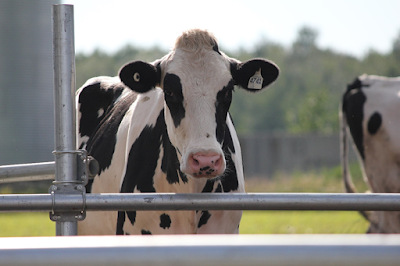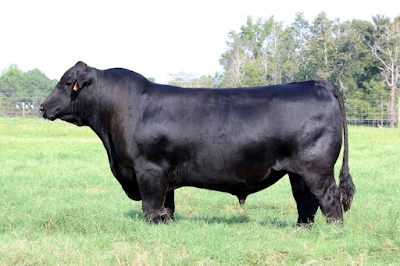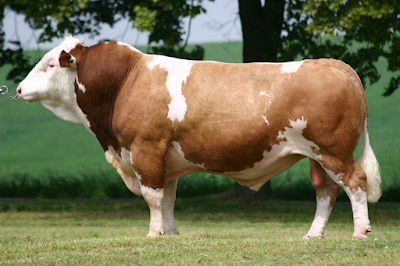Hi, thanks for being interested in these amazing animals, the cattle. As a veterinary medicine student, the most animal that I know information about is cattle, from anatomy to physiology, to its nutrition and of course its breeds. So let me help you know the best cattle breeds.
Which Cattle Breed is Best for Milk?
Unfortunately, the size of the udder is not always a good indication of how much the cattle will produce milk. A big udder does not mean that this cow will give us a huge amount of milk. So, what determines it? the genes.
Dairy cows that have this amazing ability to produce large amounts of milk are:
1. Holstein
Origin: Netherlands
Body Color: black and white
Average Milk Yield: the largest breed
Fat Percentage: the lowest of other breeds
Beef Value: High
2. Guernsey
Origin: England
Body Color: Shade of fawn with white markings
Average Milk Yield: the least of the most famous 5 breeds
Fat Percentage: 5%
Beef Value: low
3. Brown Swiss
Origin: Switzerland
Body color: very light brown (in females) to very dark brown (in males)
Average Milk Yield: the third of the most famous 5 breeds
Fat Percentage: 4%
Beef Value: High
Which Cattle is Best for Meat?
1. Black Angus
Origin: England
Body color: black or red
Body size: female 550 kg and male 800 kg
2. Hereford
Origin: England
Body color: rich red with a white face
Body size: female 700 kg and male 1000 kg
3. Charolais
Origin: France
Body color: creamy white or very light straw
Body size: female 750 kg and male 1000 kg
4. Galloway
Origin: Scotland
Body color: black with white belts
Body size: the smallest of the beef breeds
Best Cattle for Milk and Meat
1. Milking shorthorn
Origin: England
Body color: red, white, and roan
Average milk yield: 3800
2. Lincoln Red
Origin: England
Body color: deep cherry red
Average milk yield: 3600
3. Redpoll
Origin: England
Body color: deep red on all body parts
Average milk yield: 3500
4. Simmental
Origin: Switzerland
Body color: red and white with a white face
Average milk yield: 4000
Best Indian Cattle
Dairy breeds such as Sahiwal and Red Sindhi.
Sahiwal Cattle
· Although Sahiwal is basically a dairy breed, cattle of this type can be used for beef and work purposes.
Average Milk Yield: the least of the most famous 5 breeds
Fat Percentage: 5%
Beef Value: low
3. Brown Swiss
Origin: Switzerland
Body color: very light brown (in females) to very dark brown (in males)
Average Milk Yield: the third of the most famous 5 breeds
Fat Percentage: 4%
Beef Value: High
Which Cattle is Best for Meat?
1. Black Angus
Origin: England
Body color: black or red
Body size: female 550 kg and male 800 kg
2. Hereford
Origin: England
Body color: rich red with a white face
Body size: female 700 kg and male 1000 kg
3. Charolais
Origin: France
Body color: creamy white or very light straw
Body size: female 750 kg and male 1000 kg
4. Galloway
Origin: Scotland
Body color: black with white belts
Body size: the smallest of the beef breeds
Best Cattle for Milk and Meat
1. Milking shorthorn
Origin: England
Body color: red, white, and roan
Average milk yield: 3800
2. Lincoln Red
Origin: England
Body color: deep cherry red
Average milk yield: 3600
3. Redpoll
Origin: England
Body color: deep red on all body parts
Average milk yield: 3500
4. Simmental
Origin: Switzerland
Body color: red and white with a white face
Average milk yield: 4000
Best Indian Cattle
Dairy breeds such as Sahiwal and Red Sindhi.
Sahiwal Cattle
· Although Sahiwal is basically a dairy breed, cattle of this type can be used for beef and work purposes.
· The average lactation yield is about 22000 kg.
· Milk fat percentage is 4.3- 6%
· Mature cows weigh 390 kg and mature bulls weigh 520 kg
Red Sindhi Cattle
· The average milk yield is approximately 1000 kg.
· The milk fat percentage is 5%
· The mature cow weight 280 kg and the mature bull weight 390 kg
Beef breeds such as Brahman.
Dual purposes breed such as hariana, tangi, and ongole.
How To Choose Cattle That Suit You?
1. Your goals for your herd. Are you raising cattle for beef production, dairy production, or both?
2. Your budget. Some breeds are more expensive than others.
3. Your climate and environment. Some breeds are better suited for warm climates, while others are better suited for cold climates.
4. Your personal preferences. Some people prefer certain breeds for their looks, temperament, or other factors.
There are more things to take into consideration when you buy, for example, if you are going to buy a dairy you should know what is in most demand in your city, milk, butter, or yogurt. To choose the breed correctly.
These are not the only breed of cows, put into consideration the local breeds of your country, they are maybe more suitable because they are adjusted to the climate, food, diseases, and everything else.
Starting your farm or even if you just want to raise a small herd, is not something easy that needs a lot of work and money, please consider the information I mentioned before to choose your perfect cow.
Written by: Heba Salah
















.jpeg)





0 Comments